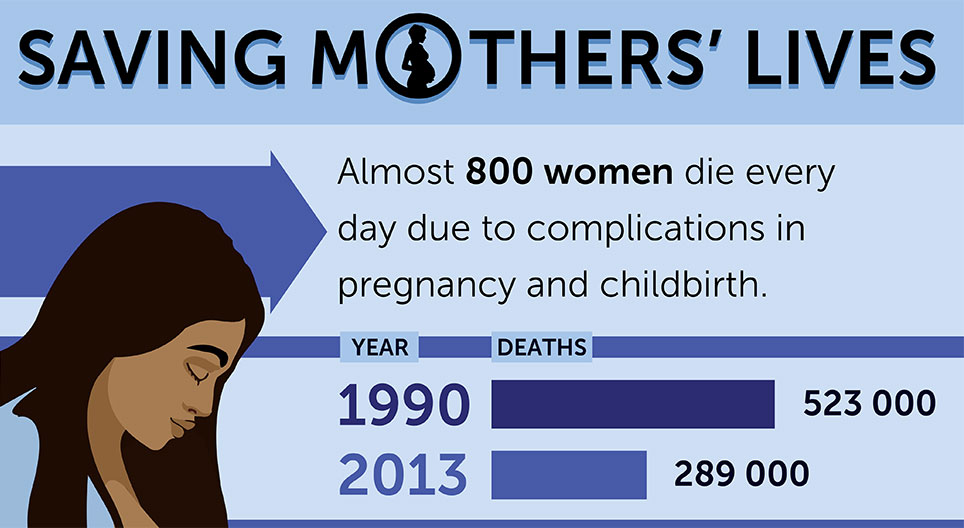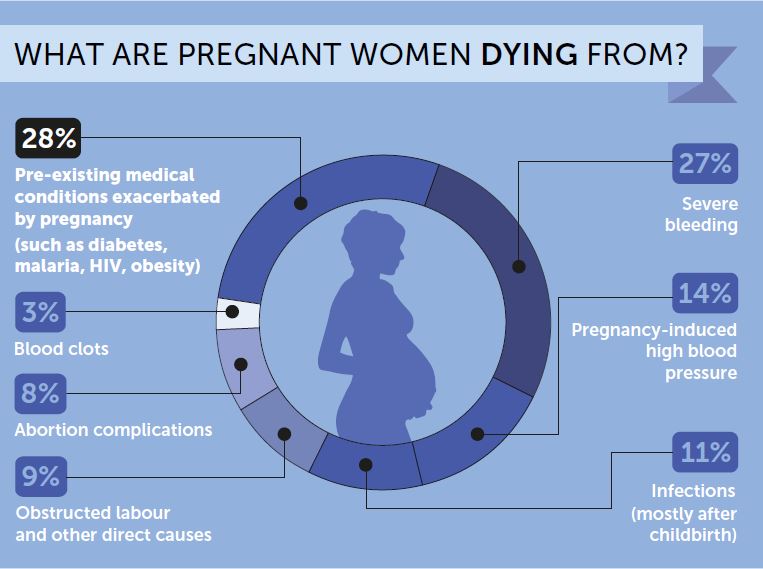Previously in this space, we’ve discussed the shortcomings of the American healthcare system; you know the one which has been ranked as the worst among industrialized nations for the fifth time, according to the 2014 Commonwealth Fund survey? Of course the real concern isn’t any subjective measure of “best” but the measurable outcomes such as life expectancy, access to primary care and rates of immunization, which are in fact the basis of the ongoing poor rankings.
There’s been a recent update in the data on one particularly disturbing data point. The US is the only developed nation in the world in which the maternal mortality rate (i.e. number of women dying during childbirth) is rising, and it is one of only eight countries overall in which the rate has increased at all during the last decade. In fact, this rate has doubled over a recently evaluated 25-year timeframe. Approximately 18.5 mothers died for every 100,000 births in 2013. This number was only 7.2 per 100,000 in 1987.
How can we justify, much less accept a maternal mortality rate twice as that occurring in Saudi Arabi and three times as high as in the United Kingdom?
This country has seen a change in its public health stance from serving the public interest to becoming negatively affected by politics. The same considerations that leave us at risk for disease and death in general seem to be adding risk in the case of maternal mortality.
- Access to care (physicians and insurance) – You would do well to recall that at the onset of the Affordable Care Act, there was a shortage of physicians in this country of approximately 40,000. It has become evident that the gap is not going to be filled by an increase in the physician pool. Regardless of any other initiatives, this will mean less access to physicians. You should also be reminded that at the same time, estimates were that as many as 50 million Americans were thought not to have insurance, which compounds the issue of access.
- Cost – The relevance here is although the US spends approximately $2 trillion on health care annually (its healthcare spend as a percentage as gross domestic product – 17% – is far and away the highest in the world), that number is more reflective of medical costs (i.e. healthcare consequences) than healthcare costs (i.e. health prevention).
- Quality – In this example, quality is a reflection and consequence of the absence of access to physicians and insurance in advance of childbirth. This issue is coupled with the inability to independently obtain prenatal care because of the extremely high cost of care. The poor quality outcomes are likely more reflective of a stacked deck in advance of childbirth instead of poor medical care during childbirth. Along those lines, it shouldn’t surprise you that communities affected by healthcare disparities are reflected prominently in this data. For example the maternal mortality rate for Black women between 2010-2012 was nearly twice that as for Whites (54.7 vs. 29.3 per 100,000 births).
It is fact that the public health data shows that the South in general, and more specifically, states that didn’t participate in the recent round in Medicaid expansion are more adversely affected by maternal mortality. Whether that’s correlation or causation is less relevant than the fact that increasing access to care and promotion of preventive strategies is a sound public health strategy and should be exempt from political considerations.
So… what are you to do with this information? Remember that as horrible as it is, the increase in maternal mortality really is just a symptom of problems existing within our healthcare system. What this means for you is to engage in healthcare basics: make sure you and your family take advantage of existing insurance options, make sure that you take advantage of your relationship with your healthcare providers, and make sure you engage in health maintenance (diet, exercise and in this example, prenatal care). Also, it never hurts to advocate for women’s health issues. If you do these things, the overwhelming likelihood is you won’t become part of these unfortunate statistics.
Thanks for liking and following Straight, No Chaser! This public service provides a sample of what http://www.SterlingMedicalAdvice.com (SMA) and 844-SMA-TALK offers. Please share our page with your friends on WordPress, like us on Facebook @ SterlingMedicalAdvice.com and follow us on Twitter at @asksterlingmd.
Copyright © 2015 · Sterling Initiatives, LLC





